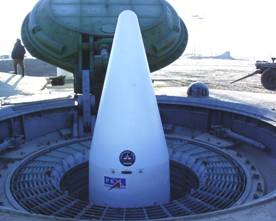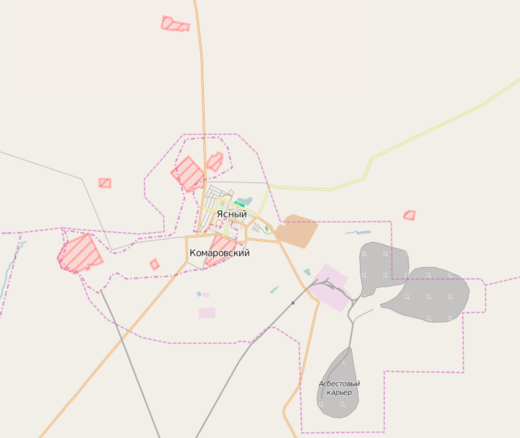In an article in Jane's Intelligence Review, "Russia tests hypersonic glide vehicle", published last week, Alexander Stukalin and I tried to put together all that is known about Project 4202 to this date. The article is behind a very serious paywall, but there is not much there that has not been published here already - starting from the 2013 post on Object 370 and to the February report about the failed flight test of the Project 4202 vehicle. All the information is, of course, taken from open sources (most of the links are in the earlier posts and comments).
Still, a few things may be worth mentioning. First, there is a list of flight tests that seem to be part of the hypersonic development program. For some tests the information is fairly solid, for others it is more circumstantial. It is quite possible that the tests continued in the 1990s, but if they did, there are few signs of that.
| Date | Test site | Comment |
| 28 Feb 1990* | Baykonur | Appears to be the first test of the Yu-70/102E vehicle. Did not involve separation of the vehicle from booster |
| 5 Mar 1990 | Baykonur | Yu-70/102E vehicle. Did not involve separation of the vehicle from booster |
| 27 Jun 2001** | Baykonur | A UR-100NUTTH test that may have involved the Yu-70/102E vehicle |
| 18 Feb 2004 | Baykonur | Demonstration of the Yu-70/102E vehicle. UR-100NUTTH launch during a strategic exercise. Reportedly unsuccessful. |
| 27 Dec 2011 | Baykonur | Appears to be the first test of the Yu-71 vehicle of the Project 4202 program |
| 26 Sep 2013? | Dombarovskiy | Presumably a Yu-71 test. Reportedly unsuccessful |
| Sep 2014? | Dombarovskiy | Presumably a Yu-71 test. Probably unsuccessful |
| 26 Feb 2015* | Dombarovskiy | Presumably a Yu-71 test. Apparently unsuccessful |
It appears that until 2011 the tests involved an "old" vehicle, referred to as Yu-70 or 102E. The December 2011 tests is by all indication the first one that was done under the Project 4202 program. The vehicle is now known as Yu-71.
A closer look at the NPOMash web site showed that it worked on a system that is strikingly similar to a hypersonic vehicle system - the Strela launcher and its larger payload. This should give a sense of what the Yu-71 vehicle looks like. In particular, we can see that the launcher with a larger payload sticks out of the standard UR-100NUTTH silo - this is why the new system will be deployed in converted R-36M silos, which are considerably larger.
Speaking of silo conversions, it is still not clear which one of the Dombarovskiy silos is used for Project 4202 launches. But there is only one silo - east of Yasnny - that has a restricted flight area above it (as shown at the fpln.ru site), so it is quite possible that it is the one. Unfortunately, the most recent imagery on Google Earth is from 2009, which is probably before the construction there started in earnest.
It appears that we are still quite a few years away from seeing the hypersonic vehicle in action, especially given the apparent string of failures in recent tests. The maneuvering part of the flight, which is the whole point of the program, seems to be the most difficult to master. But it is by all indications an active high-priority program, so we will probably see it at some point.
UPDATE 4/25/16:
[*] February 25 in the original post was a double mistake - the correct dates are February 28 in 1990 and February 26 in 2015.
[**] This appears to be an error. The text of the Jane's article says that the test took place on 26 June 2001, but there was a mistake in the table, which has 6 June 2001. Neither date is correct, though - the only launch of UR-100NUTTH took place on June 27, 2001. It was indeed a Yu-70 test.



Comments
MARV's are without a doubt more viable as an anti-ABM strategy now that the U.S. has chosen the kinetic kill vehicle concept over the nuclear armed interceptor concept. A very slight trajectory shift of no more than a few feet is all that would be required to defeat a kinetic kv. That being said, the continued failures of Russia's MARV program are somewhat baffling. The basic, original MARV concept was simply the standard conical reentry vehicle with 4 simple thrusters flush mounted and arranged 90 degrees from each other. Yet, we now see images of reentry vehicles that look like hypersonic aircraft designs. This seems like an unnecessarily complicated means of making small trajectory shifts...
some update
http://vpk-news.ru/news/26228
to Jon Grams:
And why do You think, that Russia (Soviets) had failures in the MARV program? :-) Soviets had just very successful development on this subject... But 4202 project is not MARV... It is absolutely another vehicle.
MaRV Primer
http://www.slideshare.net/ramana_56/bgrv-and-indian-missiles-arun-vishwakarma-rev-1-c-9600008
One more article on this subject:
http://www.vpk-news.ru/articles/27160
Hi Pavel!
More recent sat images (2015) of that silo are on Terraserver
http://www.terraserver.com/view.asp?cx=59.959103&cy=51.036845&proj=4326&mpp=0.75&sdrt=jax
But - at least for me - I can see no changes at this site
Cheers
BTW: it is worth to follow the history of images on Terraserver for these two silos (former 621st RGT):
50.972676° 59.551189° (Aug 20th 2014 show a R-36 I think)
http://www.terraserver.com/view.asp?cx=59.551189&cy=50.972676&proj=4326&mpp=0.75&sdrt=jax
and 51.030833° 59.690332°
http://www.terraserver.com/view.asp?cx=59.690332&cy=51.030833&proj=4326&mpp=0.75&sdrt=jax
Thank you. That's very interesting. But the 4202 silo has to be somewhere.